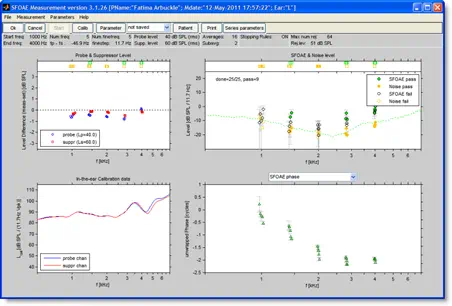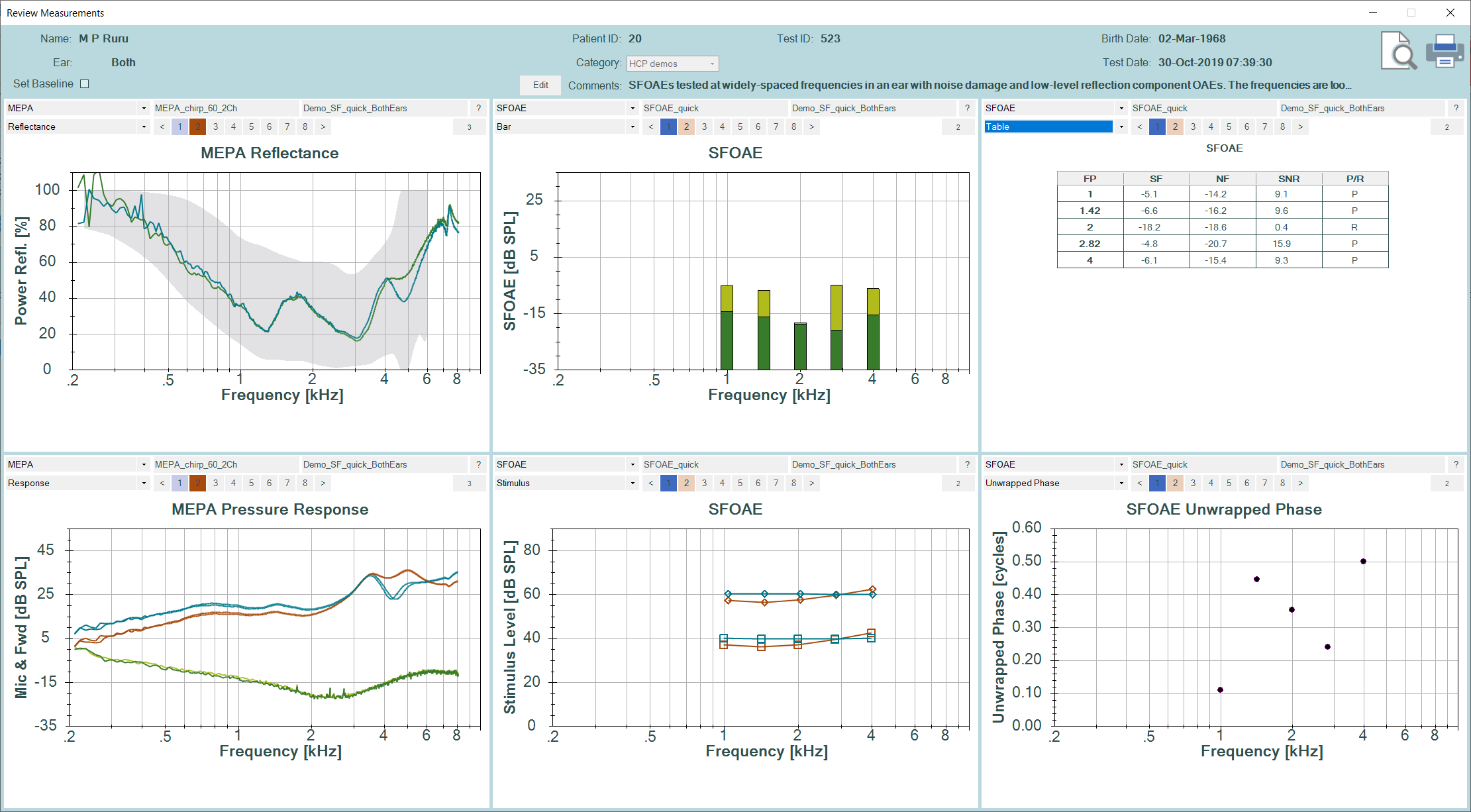

Modules
SFOAE
SFOAE Testing
Stimulus-frequency otoacoustic emission testing is available to our research clients in the SF Modules for both OtoStat and HearID. It implements the Shera & Guinan (1999) algorithm.
Test protocols are flexible and customizable. Test frequencies can be evenly spaced in linear, log, or power-law spacing, and/or clustered at key frequencies. Clustering allows SFOAE group delay to be estimated efficiently without measuring the entire spectrum.
Out of all the OAE measurement types, SFOAEs provide the most direct and clear measurement of the reflection-component OAE, which is thought to be most vulnerable to cochlear insult (Shera, 2004).
SFOAEs on HearID

- Multiple plot spaces show the SFOAE spectrum, levels, phase.
- Customizable protocols.
- Test frequencies can be evenly spaced in linear, log, or power-law spacing, and/or clustered at key frequencies. Clustering allows SFOAE group delay to be estimated efficiently without measuring the entire spectrum.
SFOAE with CAS
Also available for SF Module research users is a contralateral elicitor add-on. The add-on generates digital broad-band noise or a tone, synchronizes the output with the SFOAE measurement (including programmable on and offset delays), and automatically saves the data files with a common file prefix. This add-on is software only - a suitable sound card and calibrated earphone must be provided.
This feature has been superceded by (and included in) the dedicated MOCR module, but is still available for those researchers who need ultimate flexibility.
Resources
Shera, C. A., and Guinan, J. J. (1999). Evoked otoacoustic emissions arise by two fundamentally different mechanisms: a taxonomy for mammalian OAEs, Journal of the Acoustical Society of America 105, 782-798.
Shera, C. A. (2004). Mechanisms of Mammalian Otoacoustic Emission and their Implications for the Clinical Utility of Otoacoustic Emissions, Ear Hear, 25, 86-97.
Lapsley Miller, J. A., Boege, P., Marshall, L., Shera, C., & Jeng, P. S. (2004). Stimulus-frequency otoacoustic emissions: Validity and reliability of SFOAEs implemented on Mimosa Acoustics SFOAE measurement system v2.1.18. (Technical Report No. 1231). Groton, CT.: Naval Submarine Medical Research Laboratory. (Download pdf...)
